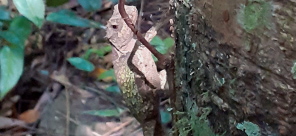Birds of Vietnam, Bird Species in Vietnam

Let's join AdventureGreen on our bird quests to learn about the different birds and bird species in Vietnam. Here you can find out more about the birding spots that these bird species are found.
- Order: Charadriiformes
The Rostratulidae in the order Charadriiformes, commonly known as the painted-snipes, are a family of wading birds that consists of two genera: Rostratula and Nycticryphes.
- Order: Charadriiformes
- Family: Laridae
Gygis is a genus of white terns in the family Laridae.
1/ White tern or common white tern (Nhàn trắng, Gygis alba), sometimes known as the fairy tern, angel tern and white noddy
The name Gygis is from the Ancient Greek guges for a mythical bird and the specific alba is Latin for "white"
- Order: Charadriiformes
- Family: Laridae
Sternula is a genus of small white terns in the family Laridae.
The genus name is a diminutive of Sterna, "tern".
1/ Little tern (Nhàn nhỏ, Sternula albifrons)
The specific albifrons is from Latin albus, 'white', and frons, 'forehead'.
- Order: Charadriiformes
- Family: Laridae
Thalasseus, the crested terns, is a genus of eight species of terns in the family Laridae.
The generic name is derived from the Ancient Greek Thalassa meaning "sea".
1/ Greater crested tern (Nhàn mào, Thalasseus bergii), also called crested tern or swift tern
The species epithet bergii commemorates Carl Heinrich Bergius, a Prussian pharmacist and botanist who collected the first specimens of this tern near Cape Town.
- Order: Charadriiformes
- Family: Laridae
Onychoprion, the "brown-backed terns", is a genus of seabirds in the family Laridae.
The genus name is from Ancient Greek onux, "claw" or "nail", and prion, "saw".
1/ Bridled tern (Nhàn lưng đen, Onychoprion anaethetus)
The specific anaethetus means "senseless, stupid".
2/ Sooty tern (Nhàn nâu, Onychoprion fuscatus), coloquially wideawake tern or just wideawake
The specific fuscatus is Latin for "dark".
- Order: Charadriiformes
- Family: Laridae
Chlidonias, often known as the marsh terns, is a genus of birds in family Laridae.
The birds are found in freshwater marshes, rather than coastal locations.
The genus name Chlidonias is from Ancient Greek khelidonios, "swallow-like", from khelidon, "swallow".
1/ Whiskered tern (Nhàn đen, Chlidonias hybrida)
The specific hybridus is Latin for hybrid.
2/ White-winged tern, or white-winged black tern (Nhàn xám, Chlidonias leucopterus or Chlidonias leucoptera)
- Order: Charadriiformes
- Family: Laridae
Anous, commonly known as the noddies, is a genus of seabirds in family Laridae.
Anous is Ancient Greek for "stupid" or "foolish", referring to the birds' unwariness or indifference to hunters, predators.
1/ Brown noddy or common noddy (Nhàn đầu xám, Anous stolidus)
- Order: Charadriiformes
- Family: Laridae
Gelochelidon is a genus of terns in the bird family Laridae.
The name combines the Ancient Greek gelao meaning "to laugh" with khelidon meaning "swallow".
1/ Gull-billed tern (Nhàn chân đen, Gelochelidon nilotica), formerly Sterna nilotica
formerly placed in the genus Sterna.
The specific epithet nilotica is from Latin niloticus meaning "of the River Nile".
- Order: Charadriiformes
- Family: Laridae
Hydroprogne is a genus of terns in the bird family Laridae.
The genus name is from Ancient Greek hudros, "water", and Latin progne, "swallow".
1/ Caspian tern (Nhàn Caxpia, Hydroprogne caspia)
The specific caspia is from Latin and, like the English name, refers to the Caspian Sea.
- Order: Charadriiformes
- Family: Laridae
Sterna is a genus of terns in the bird family Laridae.
Sterna is derived from Old English "stearn" which appears in the poem The Seafarer (1000 years after C.E).
1/ Common tern (Nhàn, Sterna hirundo)
The Latin for swallow is hirundo, and refers here to the tern's superficial likeness to that unrelated bird, which has a similar light build and long forked tail. This leads to the informal name "sea swallow".
2/ Black-bellied tern (Nhàn bụng đen, Sterna acuticauda)
3/ Roseate tern (Nhàn hồng, Sterna dougallii)
4/ Black-naped tern (Nhàn Xumatra, Sterna sumatrana)
- Order: Charadriiformes
- Family: Laridae
Ichthyaetus is a genus of gulls. The genus name is from Ancient Greek ikhthus, "fish", and aetos, "eagle". They were previously included in the genus Larus.
1/ Pallas's gull (Mòng bể đầu đen lớn, Ichthyaetus ichthyaetus), also known as the great black-headed gull
earlier placed in the genus Larus.
2/ Relict gull or Central Asian gull (Mòng bể relic, Ichthyaetus relictus)
- Order: Charadriiformes
- Family: Laridae
Saundersilarus is genus of gulls in the family Laridae.
1/ Saunders's gull (Mòng bể mỏ ngắn, Saundersilarus saundersi) or the Chinese black-headed gull
earlier placed in the genus Larus.
The Saunders's gull is named after the British ornithologist Howard Saunders.






































